
How to Use MDDS30: Examples, Pinouts, and Specs
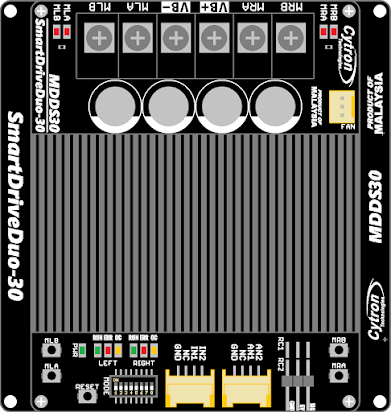
 Design with MDDS30 in Cirkit Designer
Design with MDDS30 in Cirkit DesignerIntroduction
The MDDS30, manufactured by Cytron, is a high-performance digital signal processor (DSP) designed specifically for audio processing applications. It incorporates advanced algorithms for sound enhancement, noise reduction, and audio effects, making it an ideal choice for professional audio equipment, home theater systems, and consumer electronics. With its robust design and versatile functionality, the MDDS30 is widely used in applications requiring superior audio quality and real-time processing.
Explore Projects Built with MDDS30
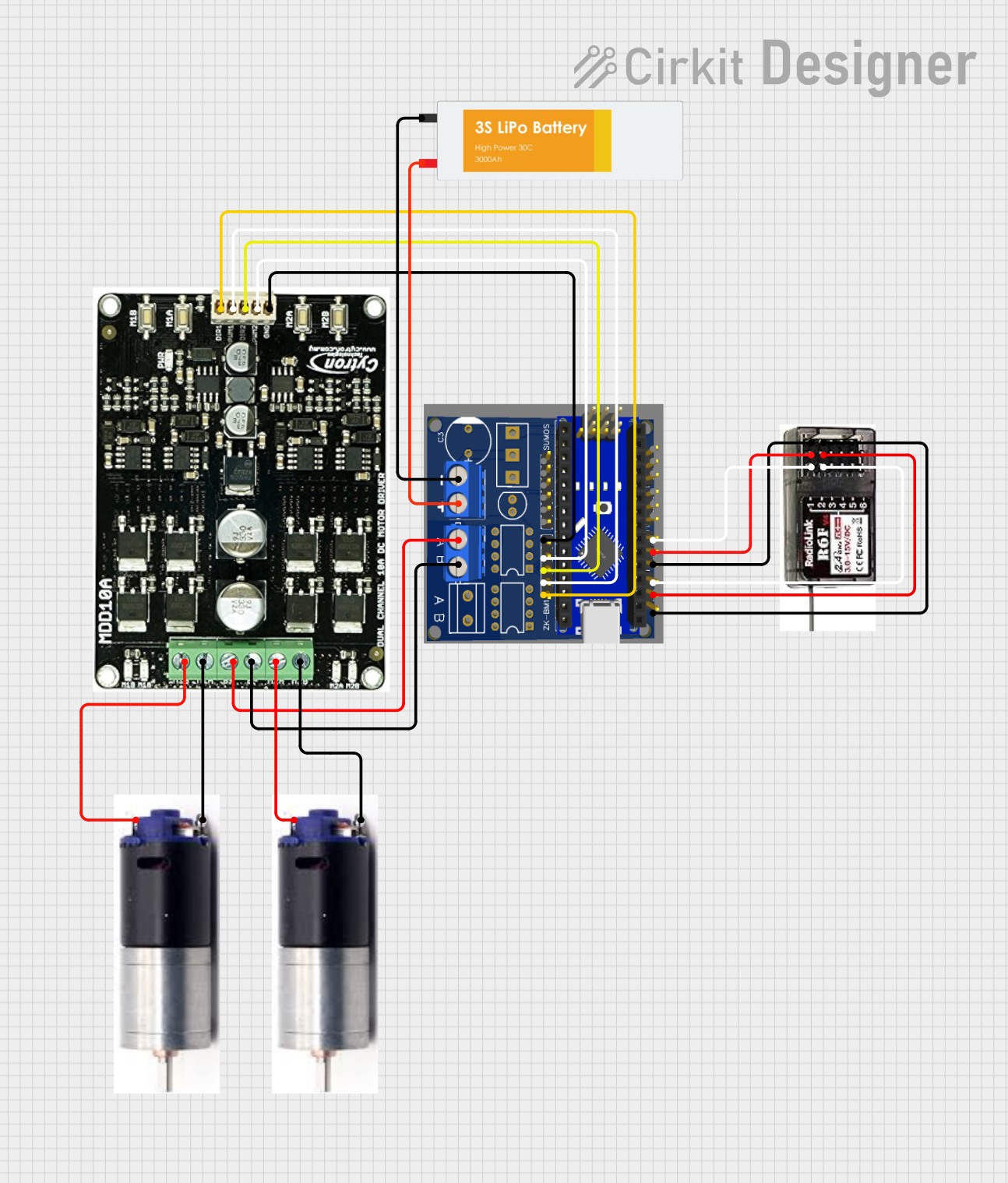
 Open Project in Cirkit Designer
Open Project in Cirkit Designer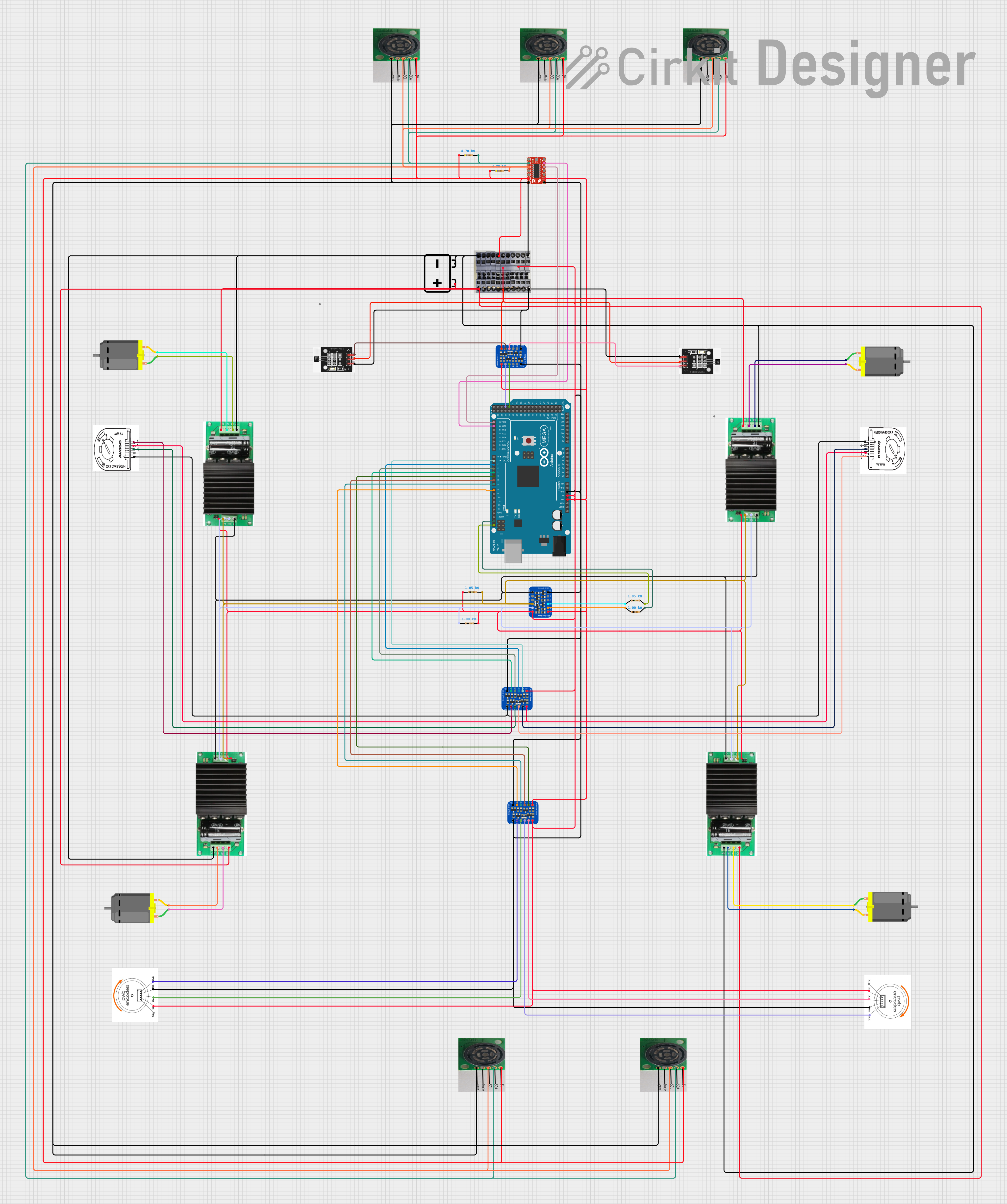
 Open Project in Cirkit Designer
Open Project in Cirkit Designer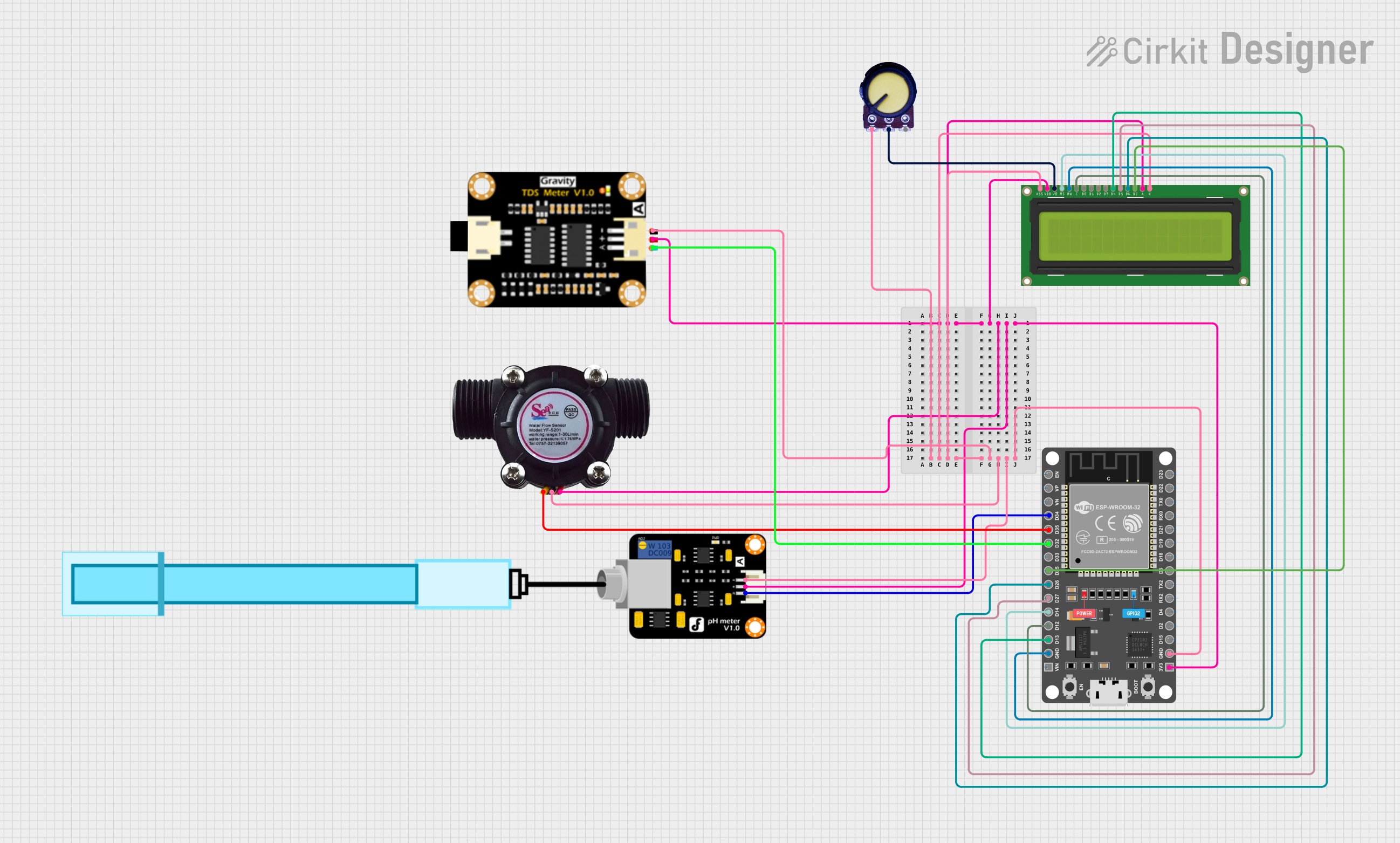
 Open Project in Cirkit Designer
Open Project in Cirkit Designer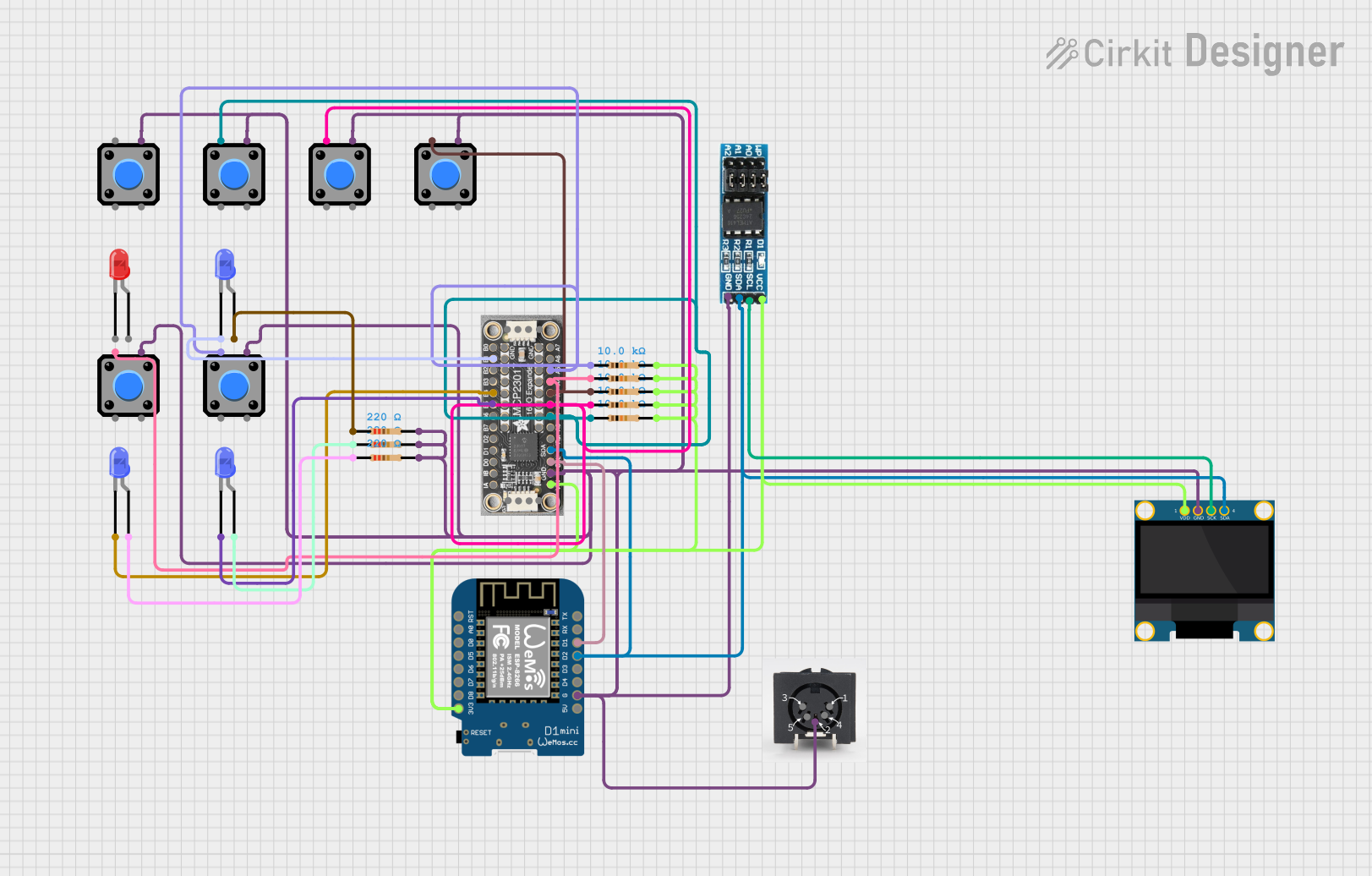
 Open Project in Cirkit Designer
Open Project in Cirkit DesignerExplore Projects Built with MDDS30

 Open Project in Cirkit Designer
Open Project in Cirkit Designer
 Open Project in Cirkit Designer
Open Project in Cirkit Designer
 Open Project in Cirkit Designer
Open Project in Cirkit Designer
 Open Project in Cirkit Designer
Open Project in Cirkit DesignerCommon Applications
- Professional audio equipment (e.g., mixers, amplifiers)
- Home theater systems
- Noise-canceling headphones
- Audio effects processors
- Consumer electronics (e.g., smart speakers, soundbars)
Technical Specifications
The MDDS30 is engineered to deliver exceptional performance in audio processing. Below are its key technical specifications:
General Specifications
| Parameter | Value |
|---|---|
| Manufacturer | Cytron |
| Processor Type | Digital Signal Processor (DSP) |
| Operating Voltage | 3.3V to 5V |
| Power Consumption | 1.2W (typical) |
| Clock Speed | 200 MHz |
| Audio Channels Supported | Up to 8 channels |
| Audio Resolution | 24-bit |
| Sampling Rate | Up to 192 kHz |
| Communication Interface | I2C, SPI, UART |
| Package Type | QFP-64 |
Pin Configuration
The MDDS30 features a 64-pin QFP (Quad Flat Package) layout. Below is a summary of the pin configuration:
| Pin Number | Pin Name | Description |
|---|---|---|
| 1 | VDD | Power supply (3.3V to 5V) |
| 2 | GND | Ground |
| 3 | I2C_SCL | I2C clock line |
| 4 | I2C_SDA | I2C data line |
| 5 | SPI_MOSI | SPI Master Out Slave In |
| 6 | SPI_MISO | SPI Master In Slave Out |
| 7 | SPI_SCK | SPI clock |
| 8 | UART_TX | UART transmit |
| 9 | UART_RX | UART receive |
| 10 | AUDIO_IN1 | Audio input channel 1 |
| 11 | AUDIO_IN2 | Audio input channel 2 |
| 12 | AUDIO_OUT1 | Audio output channel 1 |
| 13 | AUDIO_OUT2 | Audio output channel 2 |
| 14-64 | Reserved | Reserved for additional functionality |
Usage Instructions
The MDDS30 is designed to be integrated into audio processing circuits. Below are the steps and best practices for using the component:
Basic Circuit Integration
- Power Supply: Connect the VDD pin to a stable 3.3V or 5V power source and the GND pin to ground.
- Audio Input/Output: Connect audio input signals to the AUDIO_IN pins and retrieve processed audio from the AUDIO_OUT pins.
- Communication Interface: Use I2C, SPI, or UART to configure the DSP and control its functionality. Ensure proper pull-up resistors for I2C lines if required.
- Clock Signal: Provide an external clock signal if necessary, or configure the internal clock.
Important Considerations
- Decoupling Capacitors: Place decoupling capacitors (e.g., 0.1 µF) near the VDD pin to reduce noise and ensure stable operation.
- Heat Dissipation: Ensure adequate heat dissipation, as the DSP may generate heat during operation.
- Signal Integrity: Use shielded cables for audio signals to minimize interference and maintain audio quality.
- Firmware Updates: Regularly update the firmware to access the latest audio processing algorithms and features.
Example: Connecting MDDS30 to Arduino UNO
The MDDS30 can be controlled using an Arduino UNO via the I2C interface. Below is an example code snippet:
#include <Wire.h> // Include the Wire library for I2C communication
#define MDDS30_I2C_ADDRESS 0x40 // Replace with the actual I2C address of MDDS30
void setup() {
Wire.begin(); // Initialize I2C communication
Serial.begin(9600); // Initialize serial communication for debugging
// Send initialization commands to MDDS30
Wire.beginTransmission(MDDS30_I2C_ADDRESS);
Wire.write(0x01); // Example command to initialize the DSP
Wire.endTransmission();
Serial.println("MDDS30 initialized.");
}
void loop() {
// Example: Send a command to adjust audio settings
Wire.beginTransmission(MDDS30_I2C_ADDRESS);
Wire.write(0x02); // Example command to adjust audio settings
Wire.write(0x10); // Example parameter value
Wire.endTransmission();
delay(1000); // Wait for 1 second before sending the next command
}
Notes:
- Replace
0x40with the actual I2C address of your MDDS30. - Refer to the MDDS30 datasheet for a complete list of commands and parameters.
Troubleshooting and FAQs
Common Issues and Solutions
No Audio Output
- Cause: Incorrect wiring or configuration.
- Solution: Verify connections to AUDIO_IN and AUDIO_OUT pins. Check the DSP configuration via the communication interface.
Distorted Audio
- Cause: Signal interference or incorrect sampling rate.
- Solution: Use shielded cables for audio signals and ensure the sampling rate matches the input source.
Communication Failure
- Cause: Incorrect I2C/SPI/UART settings.
- Solution: Double-check the communication protocol settings (e.g., baud rate, clock speed) and ensure proper pull-up resistors for I2C lines.
Overheating
- Cause: Insufficient heat dissipation.
- Solution: Add a heat sink or improve ventilation around the DSP.
FAQs
Q: Can the MDDS30 process multiple audio channels simultaneously?
A: Yes, the MDDS30 supports up to 8 audio channels for simultaneous processing.
Q: What is the maximum sampling rate supported by the MDDS30?
A: The MDDS30 supports a maximum sampling rate of 192 kHz.
Q: Can I use the MDDS30 with a 5V microcontroller?
A: Yes, the MDDS30 operates within a voltage range of 3.3V to 5V, making it compatible with 5V microcontrollers.
Q: Does the MDDS30 require external memory?
A: No, the MDDS30 has built-in memory for most applications. However, external memory can be added for advanced use cases.
By following this documentation, users can effectively integrate and utilize the MDDS30 in their audio processing projects.